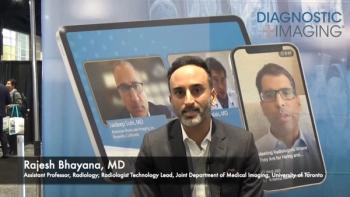
To Be Well-Read or Well-Summarized?
What should radiologists strive for?
"It was the best of times, it was the worst of times, it was the age of wisdom, it was the age of foolishness, it was the epoch of belief, it was the epoch of incredulity, it was the season of Light, it was the season of Darkness, it was the spring of hope, it was the winter of despair, we had everything before us, we had nothing before us, we were all going direct to Heaven, we were all going direct the other way.”
Famous first quotes such as from “A Tale of Two Cities” by Charles Dickens are indelible and unique. There is a sense of timelessness and wisdom from great works of literature which is what makes generations of readers read them word for word repeatedly. An attempt to summarize the work is incapable of serving justice and risks losing its essence. When it comes to English literature, reading the original book is essential to understanding the author’s viewpoints. However, when it comes to science, does this rule still apply?
Trainees in medicine have growing responsibilities with fast-paced rotations through various specialties ranging from one to four weeks in length. This rarely allows one to spend copious amounts of time reading in depth. As we are asked to bear more duties and expected to have more knowledge, the biggest challenge is balancing clinical duties with academic ones. How do you acquire a large amount of knowledge quickly and efficiently? The challenge of “life-long learning” is how best to improve this process.[[{"type":"media","view_mode":"media_crop","fid":"63594","attributes":{"alt":"Studying radiology","class":"media-image media-image-right","id":"media_crop_1675409018039","media_crop_h":"0","media_crop_image_style":"-1","media_crop_instance":"8117","media_crop_rotate":"0","media_crop_scale_h":"0","media_crop_scale_w":"0","media_crop_w":"0","media_crop_x":"0","media_crop_y":"0","style":"height: 113px; width: 170px; border-width: 0px; border-style: solid; margin: 1px; float: right;","title":"©Julia Tim/Shutterstock.com","typeof":"foaf:Image"}}]]
It is simply impractical to read entire books in an attempt to cover the medical literature. However, textbooks are the most in-depth exploration of a given topic and have long been the gold standard of learning. Deeper insight is obtained by reading in greater depth. Ideas within a text are organized and presented in a certain logical or chronological order. How ideas are presented may be as important as the ideas themselves. The process of thinking about the book’s content while reading helps to stimulate mental synthesis and combination of ideas. Furthermore, making personal summaries and notes will help with memorization and understanding rather than reading someone else’s summary.
With the age of computers and digitalization of data and literature, there is an increased struggle to catch up with reading. There are over 2.5 million new scientific papers
Trainees in turn have adapted to new demands by favoring review books rather than textbooks. However, these two types of references and methods of learning are not mutually exclusive. Strategies for digesting a textbook or reading about a certain topic includes reading backwards. Read the summary first; then go more in-depth for a topic that is less understood. This approach offers a big picture view and an outline skeleton from which one can flesh out the details. Reading backwards involves reading the summary, then headings and subdivision, then the introduction. From there, look at all the figures and figure captions carefully, and skim the text to understand the details and supporting data.
There is no right way to learn. Optimal learning for an individual probably occurs with a combination of all these tactics depending on which position on the learning curve. However, be aware that when a summary or study guide is used instead of the textbook, one may gain knowledge that is not just superficial, but wrong. Summaries often provide an overview of conclusions and facts but do not explain how the writer came to that conclusion; it is up to the reader to do the work and make sure they understand all the nuances.
Radiology Learning Task Criteria
- Interpretation of content is accurate
- Identified and describes supporting evidence
- Strongly connects new content to previous learning
- Interpretation, connection, and integration result in an accurate conclusion
- Provide strong reasons for conclusion
Newsletter
Stay at the forefront of radiology with the Diagnostic Imaging newsletter, delivering the latest news, clinical insights, and imaging advancements for today’s radiologists.




























